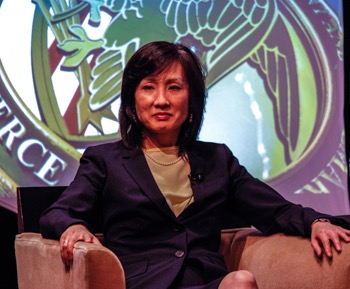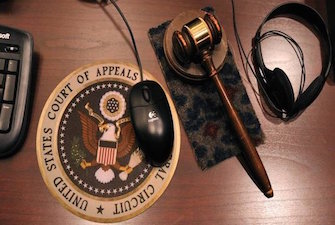Drug patents fare better at PTAB
While the Patent Trial and Appeal Board (PTAB) has not been friendly to patent owners in general, the PTAB has not been inhospitable to pharma patent owners according to a report issued by BiologicsHQ, a searchable database of drugs, patents, and companies involved in PTAB inter partes review (IPR) proceedings developed by attorneys at Fitzpatrick, Cella, Harper & Scinto. The BiologicsHQ report shows a much different story in terms of drug patents facing IPR challenges at the PTAB. The report looks at a combination of data sources, including the Orange Book, Center for Drug Evaluation and Research (CDER) listed biologics and statistics on America Invents Act (AIA) trials published by the PTAB. The BiologicsHQ report draws the conclusion that, despite widespread concerns about the PTAB operating as a patent death squad in IPRs, “such concern is not justified for drug patents.”
According to the March 2017 IPR statistics issued by the PTAB, 53 percent of IPRs resolved as of March 31, 2017 were instituted; the rest were either denied institution or reached some other resolution prior to the institution decision. 35 percent of all resolved IPRs resulted in final written decisions and 23 percent led to findings of all claims unpatentable. Only 7 percent of all resolved IPRs led to final written decisions finding that no claim was unpatentable, and 5 percent led to mixed claim findings.
By contrast, drug patents fare better under PTAB scrutiny in terms of having claims upheld. Of the 4,563 resolved IPRs, BiologicsHQ reports that 222 petitions (5 percent) involved patents covering drugs listed in the Orange Book. Focusing on just the IPRs involving Orange Book patents, 44 percent were instituted and 38 percent reached a final written decision, but only 16 percent led to final written decisions where all claims were found unpatentable. No instituted claim was found unpatentable in 50 percent of final written decisions (19 percent of the total number of resolved Orange Book IPRs).
CDER-listed biologic drug patents also survive PTAB challenges better than patents not directed to pharmaceutical drugs, although the number of resolved challenges is quite small by comparison. By March 31, 2017, BiologicsHQ reports that a total of 29 resolved IPR petitions involved patents covering CDER-listed biologics. 41 percent of those petitions were instituted and 28 percent reached final written decisions. 17 percent of all resolved CDER-listed biologic drug IPRs led to final written decisions of all claims unpatentable, and 10 percent led to final written decisions of no claims unpatentable.
When comparing final written decisions among all IPRs, IPRs relating to Orange Book patents, and IPRs relating to CDER-listed biologic drug patents, Orange Book and CDER-listed biologic drug patents are more likely to escape with all claims intact. For all resolved IPRs, 23 percent led to final written decisions of all claims unpatentable. That’s a higher percentage than the 16 percent of Orange Book IPRs, and 17 percent of CDER-listed biologic drug IPRs that led to final written decisions where all claims are unpatentable. The 7 percent of all IPRs that led to final written decisions of no claims unpatentable is less than the 10 percent of CDER-listed biologic drug IPRs, and the 19 percent of Orange Book IPRs, that met the same fate.
Overall, 58 percent of IPRs involving drug patents resolved by the PTAB resulted in some claims remaining patentable: 60 percent for Orange Book IPRs and 45 percent for CDER-listed biologic IPRs.
USPTO undertakes review of PTAB, IPR proceedings
 The United States Patent and Trademark Office (USPTO) recently announced that, at the direction of USPTO Director Michelle Lee (shown left), the Office is launching an initiative “to further shape and improve Patent Trial and Appeal Board (PTAB) trial proceedings, particularly inter partes review proceedings.” According to the USPTO, the purpose of the initiative is to ensure that post grant proceedings are both effective and as fair as possible.
The United States Patent and Trademark Office (USPTO) recently announced that, at the direction of USPTO Director Michelle Lee (shown left), the Office is launching an initiative “to further shape and improve Patent Trial and Appeal Board (PTAB) trial proceedings, particularly inter partes review proceedings.” According to the USPTO, the purpose of the initiative is to ensure that post grant proceedings are both effective and as fair as possible.
The timing of the announcement is curious given that Michelle Lee’s days may be numbered as Director of the Office. As first reported on IPWatchdog.com, Commerce Secretary Wilbur Ross has interviewed at least three candidates for the position of Under Secretary of Commerce for Intellectual Property and Director of the United States Patent and Trademark Office: Phil Johnson, former Vice-President for Intellectual Property Strategy & Policy for Johnson & Johnson; Randall Rader, former Chief Judge of the United States Court of Appeals for the Federal Circuit; and an unidentified patent attorney characterized by one source as a “dark horse” candidate.
05.23.17 | Inter Partes Review, Patent Issues, USPTO | Gene Quinn
PTAB may invalidate claims federal courts confirmed valid
 The United States Court of Appeals for the Federal Circuit recently issued an opinion in Novartis AG v. Noven Pharmaceuticals, Inc., which affirmed the Patent Trial and Appeal Board (PTAB) invalidation of claims in related inter partes review (IPR) proceedings. The IPRs related to U.S. Patent No. 6,316,023 and U.S. Patent No. 6,335,031.
The United States Court of Appeals for the Federal Circuit recently issued an opinion in Novartis AG v. Noven Pharmaceuticals, Inc., which affirmed the Patent Trial and Appeal Board (PTAB) invalidation of claims in related inter partes review (IPR) proceedings. The IPRs related to U.S. Patent No. 6,316,023 and U.S. Patent No. 6,335,031.
Patent owners losing claims and the Federal Circuit rubber stamping the PTAB isn’t news, sadly. What makes this case different, however, is that these very same patents were previously litigated and the claims were found to be nonobvious in federal district court.
Novartis argued to the Federal Circuit that the arguments presented to the PTAB by Noven, as well as the prior art submitted to support those arguments, were the same as considered during litigation in federal court. The Federal Circuit disagreed, finding that the record in federal court was not identical to the record at the PTAB. But the Federal Circuit went further, saying that even if the records were identical, Novartis’ argument would have to fail.
05.22.17 | Federal Circuit Cases, Patent Issues | Gene Quinn
Federal Circuit rejects Google’s petition for rehearing
On April 4, 2017, the United States Court of Appeals for the Federal Circuit issued a brief order denying panel rehearing and denying rehearing en banc in Unwired Planet, LLC v. Google, Inc.
Google filed a petition for both panel rehearing and rehearing en banc. A response to the petition was invited by the court and filed by Unwired Planet, LLC. No reason for the denial of Google’s petition was provided by the Federal Circuit, which is typical. The original panel decision, authored by Judge Reyna and issued on November 21, 2016, found that the Patent Trial and Appeal Board (PTAB) was using the wrong definition for what constitutes a covered business method (CBM) patent.
A covered business method patent is defined as a patent that claims a method for performing data processing or other operations used in the practice, administration, or management of a financial product or service. Specifically excluded from the definition of a covered business method patents are those that relate to technological inventions. See 37 C.F.R. 42.301(a). To determine whether a patent is for a technological invention, the PTAB is supposed to consider whether the claimed subject matter recites a technological feature that is novel and unobvious over the prior art, and solves a technical problem using a technical solution. See 37 C.F.R. 42.301(b). Nevertheless, the PTAB had been finding patents to be CBM patents when they covered matter incidental to a financial activity or complementary to a financial activity. For more see Federal Circuit slams PTAB.
04.24.17 | CAFC, Patent Issues, posts, USPTO | Gene Quinn
Board ends interference on CRISPR
 The Patent Trial and Appeal Board (PTAB) of the United States Patent and Trademark Office (USPTO) has issued a decision in the CRISPR patent interference pending between The Broad Institute, Inc. (the Junior Party; second filer) and The Regents of the University of California (the Senior Party; first filer). The dispute is related to U.S. Patent Nos. 8,697,359; 8,771,945; 8,795,965; 8,865,406; 8,871,445; 8,889,356; 8,895,308; 8,906,616; 8,932,814; 8,945,839; 8,993,233; 8,999,641; and U.S. Patent Application Serial No. 14/704,551.
The Patent Trial and Appeal Board (PTAB) of the United States Patent and Trademark Office (USPTO) has issued a decision in the CRISPR patent interference pending between The Broad Institute, Inc. (the Junior Party; second filer) and The Regents of the University of California (the Senior Party; first filer). The dispute is related to U.S. Patent Nos. 8,697,359; 8,771,945; 8,795,965; 8,865,406; 8,871,445; 8,889,356; 8,895,308; 8,906,616; 8,932,814; 8,945,839; 8,993,233; 8,999,641; and U.S. Patent Application Serial No. 14/704,551.
The PTAB, in a per curiam decision, wrote:
Broad has persuaded us that the parties claim patentably distinct subject matter, rebutting the presumption created by declaration of this interference. Broad provided sufficient evidence to show that its claims, which are all limited to CRISPR-Cas9 systems in a eukaryotic environment, are not drawn to the same invention as UC’s claims, which are all directed to CRISPR-Cas9 systems not restricted to any environment. Specifically, the evidence shows that the invention of such systems in eukaryotic cells would not have been obvious over the invention of CRISPR-Cas9 systems in any environment, including in prokaryotic cells or in vitro, because one of ordinary skill in the art would not have reasonably expected a CRISPR-Cas9 system to be successful in a eukaryotic environment. This evidence shows that the parties’ claims do not interfere. Accordingly, we terminate the interference.
03.23.17 | Biotech, Patent Issues, USPTO | Gene Quinn


No Comments
11.22.17 | Biotech, biotechnology patents, Patent Issues, Pharma | Gene Quinn